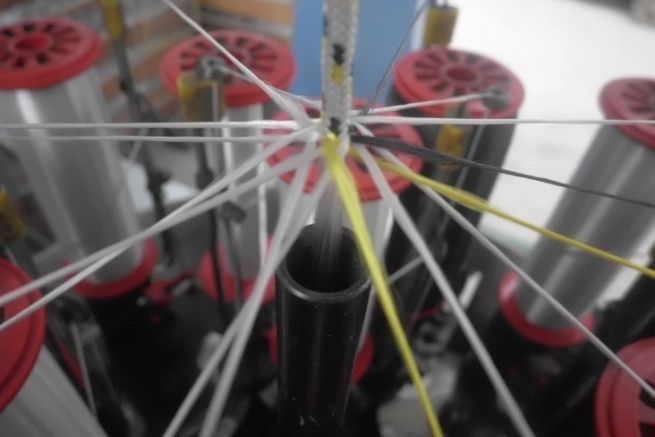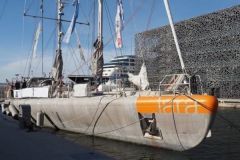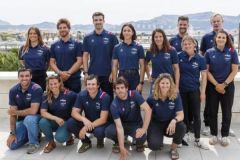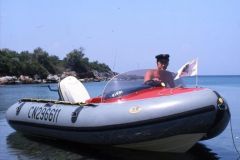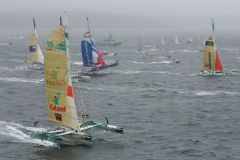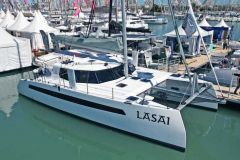The basic material
The basis for the manufacture of a modern rope is synthetic fibre. It will be polyamide, polyester, aramid or polyethylene. The industry has developed a very wide range of materials suitable for each use to meet performance and safety requirements.
One end that circulates on the deck of a boat is first of all molecules developed and transformed by large chemical laboratories, such as Dupont de Nemours. The major discoveries in this field date back to the 1930s. The chemical laboratories developed synthetic textile materials that created a real technological revolution.
The rope industry quickly took hold of these materials, which were now available in the form of huge spools of wire thinner than a hair. With braiding machines, rope makers strand and braid ropes made of polyester, polyamide, or polypropylene. These fibres, which are older and more economical than "exotic fibres", are particularly common on board our boats.

What form does bouts? take?
The chemical industry transforms synthetic fibres into huge bobbins of continuous or discontinuous yarns.
Staple fibre can be recognised by its matt, fluffy look and feel. Fibres about 15 centimetres long intertwine to form a filament. It is the ideal material to make a sheath with a good grip and a pleasant touch.
The fibre continues ...as the name suggests, is uninterrupted. It has a smooth and shiny appearance. These filaments are stronger and tougher than staple fibres. It is the perfect material to make a strong core or sheath that slides well in sheaves.
Braiding and stranding
Stringers are an impressive mechanical industry. Imposing machines with complex movements automatically handle filament spools and transform them into various and varied ropes. Techniques are constantly evolving and manufacturers are innovating to meet new demands and applications.

The braiding method consists of interlacing filaments, one half of which rotates clockwise and the other half counterclockwise. The sheath of a rope is always braided while the core can sometimes be made up of parallel threads without braiding or even filament winding for textile rigging. However, on board our pleasure boats, the majority of the ends are made up of a sheath braided around a core, which is also braided.
A braid is formed from 8 to 32 strands. The number of spindles in a sheath will determine the stiffness of the rope, for a halyard, for example, 32 spindles are chosen to ensure a good hold in the blockers.
Stranding is the oldest rope-making technique. From the time of Magellan and Columbus, the mastery of rope making enabled the development of fleets of vessels capable of setting out to discover the world. You can visit the Corderie Royale at the Rochefort Maritime Arsenal Museum to discover the methods used to make marine ropes up to 200 m long.

The making of a stranded rope consists in assembling fibres together by twisting them in one direction, these are the strands. The strands are then joined together and twisted in the opposite direction, this is the commettage. It is with a minimum of 3 strands that a rope can be made. This manufacturing technique is the simplest and most economical. On our boats, the stranded ends are mainly used in mooring lines for their ability to stretch under load and to withstand shocks.
